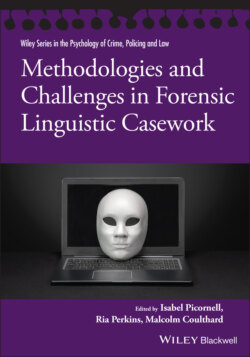Читать книгу Methodologies and Challenges in Forensic Linguistic Casework - Группа авторов - Страница 16
DOING FORENSIC LINGUISTICS
ОглавлениеWhat constitutes being a “forensic linguist”? It is not a formally recognized profession, nor is it statutorily regulated (Clarke and Kredens, 2018). One does not have to be a forensic linguist to “do” forensic linguistic analysis. Being a forensic linguist may, perhaps, be best described as an identity, one taken on by professional practitioners when undertaking forensic casework involving linguistic analysis. However, that identity is dependent on practitioners grounding their analysis of language in linguistic theory. An in-depth understanding of how language works and familiarity with the analytical tools available from the forensic linguistic toolkit is material to competently undertaking analysis. Without integrating linguistic theory into language analysis and an appreciation of the underlying reasons as to why linguistic patterns occur and the external influences that give rise to variations in those patterns, conclusions drawn on the identification of linguistic patterns are meaningless (Nini, 2018).
There is a disconnect between the work of forensic linguistic researchers and forensic linguistic practitioners in that research often assumes idealized case situations whereas, in reality, forensic linguistic casework practitioners have to work with nonidealized data. Furthermore, research tends to be tightly focused on a narrow aspect of forensic linguistic analysis, whereas casework can be messy in approach and data.
In real-life cases, data can be very varied and often very limited. Donlan and Nini (Chapter 3) worked with an 85-word statement; Picornell (Chapter 8) worked with emails 57 to 350 words long, totaling some 1,650 words for each author. At the other extreme, Queralt’s data (Chapter 4) covered more than 10 years and comprised over 300,000 words of emails and chat logs. Comparison data can also be limited, so much so that practitioners end up comparing material from different genres, for example, letters with diary entries or emails. Grant and Grieve’s comparison data (Chapter 2) of 28,000 words in the same genre for their known author is very rare indeed.
